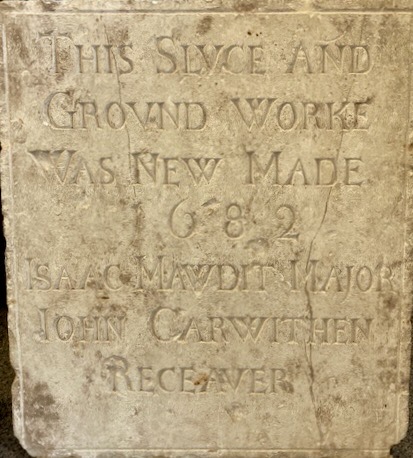
1682: A new canal entrance
With a new Quay and Custom House at Exeter, the City Chamber decided the canal needed to be longer, and workers began digging again, this time under the command of Richard Hurd from Cardiff.
The canal was extended half a mile, with a new entrance to the river just above Topsham (near today’s motorway bridge). A sluice and pair of gates connected the river to the canal, and the entrance was named Trenchard’s Sluice, after Peter Trenchard, the first sluice-keeper. Just inside the gates, the workers dug a trans-shipment basin large enough to hold 50 ships of up to 60 tons. There, goods could be safely transferred to or from lighters.
Trenchard’s Sluice was joined to the main estuary by an artificial channel running parallel to the river. This channel was narrow and tidal and had to be piloted by experienced local men. It was also prone to silting up.

Stone marking Trenchard’s Sluice, now in Exeter Custom House